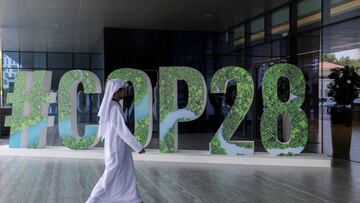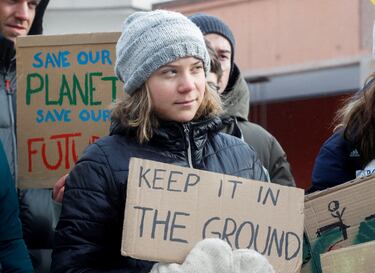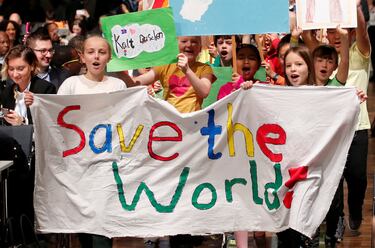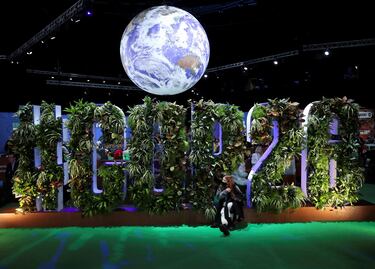COP28: what climate change goals have been discussed and agreed over the years?
Another year, another U.N. conference aimed at agreeing objectives to deal with the global crisis that we all, to varying degrees, face.

The upcoming U.N. climate conference, scheduled from 30 November to 12 December in Dubai, represents the 28th international gathering of leaders committed to addressing global warming since the inaugural “Conference of the Parties” (COP) in 1995. However, the awareness of the existential threat posed by climate change, primarily driven by the combustion of fossil fuels, predates these conferences by a considerable span. Delving into the historical timeline of climate talks provides valuable insights.
Climate talks timeline: 1800-2023
1800s: For approximately 6,000 years leading up to the industrial era, atmospheric carbon dioxide (CO2) levels remained around 280 parts per million (“ppm”). In the 1890s, Swedish scientist Svante Arrhenius calculated the temperature impact of doubling atmospheric CO2 levels, underscoring the link between burning fossil fuels and planetary warming.
1938: British engineer Guy Callendar, analyzing historical weather data, revealed a correlation between rising temperatures and increasing CO2 levels, postulating a connection between the two.
1958: American scientist Charles David Keeling initiated systematic CO2 level measurements over Hawaii’s Mauna Loa Observatory, producing the renowned “Keeling Curve” that graphically depicts the consistent rise in CO2 concentrations.
1988: Climate scientist James Hansen testified before the U.S. Congress, emphasizing that greenhouse gases from industrial activities were not only warming the planet but also altering climate and weather patterns.
Countries have debated how to combat climate change since the early 1990s. These negotiations have produced several important accords, including the Kyoto Protocol and the Paris Agreement. Find out more from our explainer: https://t.co/YpPLBY8UXL
— Council on Foreign Relations (@CFR_org) September 28, 2023
1990: The U.N.’s Second World Climate Conference saw scientists highlighting the risks of global warming, with British Prime Minister Margaret Thatcher advocating for binding emissions targets.
1992: The Rio Earth Summit witnessed the signing of the U.N. Framework Convention on Climate Change (UNFCCC), introducing the concept of “common but differentiated responsibilities.” This principle stipulated that developed nations bear greater responsibility for addressing climate-warming emissions due to their historical contributions.
1995: The first “Conference of Parties” (COP) convened in Berlin, resulting in a conclusive document urging legally binding emissions targets.
1997: COP3 in Kyoto, Japan, witnessed an agreement on emissions cuts for developed countries, though key Senate Republicans in the United States rejected the Kyoto Protocol.

2000: After the U.S. presidential election, Al Gore, through global talks on climate science, laid the groundwork for the acclaimed documentary “An Inconvenient Truth,” earning him a Nobel Peace Prize along with the Intergovernmental Panel on Climate Change.
2001: U.S. President George W. Bush deemed the Kyoto Protocol “fatally flawed,” signaling the country’s effective withdrawal.
2005: The Kyoto Protocol came into effect after Russia’s ratification, meeting the requirement for approval by at least 55 countries representing at least 55% of emissions.
2007: COP13 in Bali set the stage for a new binding agreement for both developed and developing nations.
2009: COP15 talks in Copenhagen faced near-collapse due to disagreements over a post-Kyoto framework. Instead of a binding agreement, countries voted to “take note” of a non-binding political statement.
2010: COP16 in Cancun didn’t establish new binding emissions targets but created the Green Climate Fund to assist developing countries in emissions reduction and adaptation. The Cancun Agreements also aimed to limit global warming to 2°C above the preindustrial average.

2011: COP17 in Durban encountered difficulties as major nations like China, the United States, and India resisted binding emissions cuts before 2015. The Kyoto Protocol was extended through 2017.
2012: COP18 in Doha extended the Kyoto Protocol through 2020, facing resistance from Russia, Japan, and New Zealand against new emissions targets that didn’t include developing nations.
2013: COP19 in Warsaw witnessed delegates from poorer nations walking out over disagreements on climate-related losses and damage. A compromised deal was eventually reached, coinciding with atmospheric CO2 levels crossing 400 ppm for the first time in recorded history.
2015: The global average temperature surpassed 1 degree Celsius above the preindustrial average. COP21 in Paris resulted in The Paris Agreement, the first global pact calling for increasingly ambitious emissions pledges (Nationally Determined Contributions or NDCs) from both developed and developing countries, with a commitment to limit warming to 1.5°C.
2017: U.S. President Donald Trump announced the withdrawal of the United States from the Paris Agreement, citing its perceived adverse effects on the economy.
Greta Thunberg's speech at COP24. More relevant today than ever. @BBCWomansHour https://t.co/aYPKqEBI6e
— malvernkite (@malvernkite) November 1, 2023
2018: Teen activist Greta Thunberg gained global attention, sparking youth-led weekly street protests demanding climate action.
2019: U.N. Secretary-General Antonio Guterres criticized the lack of ambition at COP25 in Madrid. This was the year COP was meant to be held in Chile but Spain stepped in at the last minute to save the event.
2020: The annual COP was postponed due to the COVID-19 pandemic.

2021: Newly elected U.S. President Joe Biden rejoined the Paris Agreement, and at COP26, the Glasgow Pact aimed to reduce coal usage and established rules for trading carbon credits to offset emissions.
Related stories
2022: COP27 in Sharm el-Sheikh, Egypt, resulted in a historic deal for a Loss and Damage Fund for climate disasters but made limited progress on addressing the emissions causing such disasters.
"The definition of hope is the fact that we believe that what we're doing matters & can be important"
— UNESCO 🏛️ #Education #Sciences #Culture 🇺🇳 (@UNESCO) November 22, 2023
During #unescoGC, we had the chance to talk to @CamilleEtienne_. Watch her message & learn why in the struggle against #ClimateChange every action counts.#ClimateAction #COP28 pic.twitter.com/U2gRtnYV4c
Over to you COP28... make us proud.

